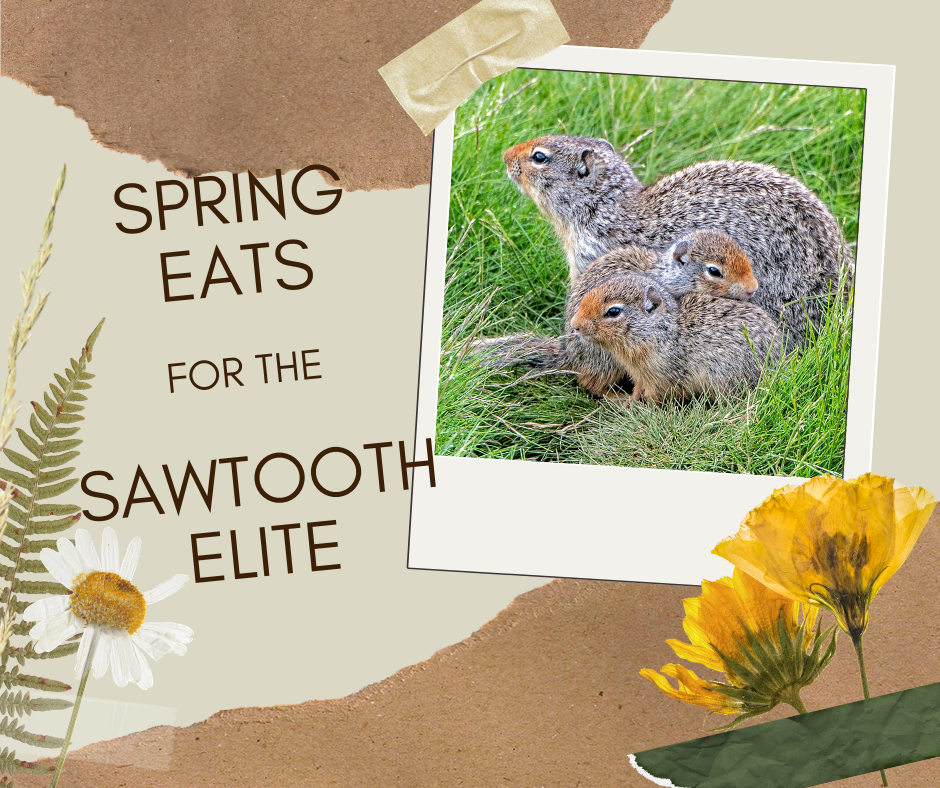It’s part of the Sawtooth Society’s purpose to preserve and protect the wildlife and the lands that are vital to the many species that inhabit the SNRA. It’s through the organization, volunteers, and donations that the wildlife in our Idaho forests can continue to flourish.
The return of the sandhill crane is most notably a sight that brings the weariest of winter inhabitants a feeling of warmer, sun-filled days ahead. Many of the well-known resident creatures of the SNRA begin to emerge, return or shed their winter coats. No matter their biological setting, all come together once again in the warmer months to reap the benefits of this precious ecosystem.
Elk, deer, and pronghorn are especially eager to eat shrubs, trees, and other plant-based foods. Elk are amazing grazers, consuming up to 10-15 pounds of vegetation per day. Deer and pronghorn on the other hand will consume around 2-5 pounds. Within the SNRA many herds will spend their spring and summer months following the foliage to higher elevations up the mountains to their summer range. The Sawtooth Society urges travelers to slow down and be especially careful on the roads as these animals are often spotted crossing highways to reach their food and water sources.
Moose, whose diets closely resemble that of the elk, also obtain the nutrients they require from water-growing grasses and fresh plant shoots, and thus are found near swampy water sources throughout the Sawtooths. They will require up to 50-60 pounds of food per day- five times the amount consumed by an elk.
The mountain lions of the SNRA are carnivores and will include insects as an adequate protein source. They are often opportunistic and will prey on nearly every mammal within the Sawtooth range; rodents, rabbits, elk, deer, mountain goats, pronghorns, and even a 1,500-pound bull moose.
Bears will be feeding on plants throughout the warmer months and will seek out berries and insects. Carrion from animals that have been hit by cars, as well as small mammals, birds, reptiles, and amphibians are on the black bear menu. This year, the SNRA has issued a Bear Food Storage Order to keep bears and visitors safe.
Fox, wolves, and coyotes are carnivores. And while the fox and coyote are more opportunistic and not as particular as the wolf, (think insects, worms, and such) all will eat as much as possible when food is available. The plentitude of insects emerging throughout the Sawtooth mountains, growing herds of elk, deer, and smaller rodents provide an ample food source for these carnivorous creatures.
The elusive nocturnal wolverine uses its powerful sense of smell to detect carrion. It’s vital to its survival as wolverines winter in the Sawtooths scavenging for animals that may have perished deep below the snow. When spring arrives it enjoys the newly sprouting plants, and berries that the warmer months produce.
Winged creatures are plentiful throughout the SNRA. Some brave the harsh climate of winter while many choose to migrate to warmer climates. When spring arrives Idaho lakes, forests, and meadows are alive with the welcoming calls of waterfowl, birds of prey, and songbirds that feed on an abundance of food sources that the Sawtooths provide.
The unofficial mascot of the Sawtooth Society, – the beloved mountain goat, will graze on grasses and forbs in the summer, following new growth up into the highest peaks. This agile footed creature will dine on shrubs, conifers, and other high mountain vegetation during the warmer season.
The Sawtooth Society encourages residents and visitors to be mindful of these creatures when visiting their homes this season. Keeping food safely stored away, not feeding wild animals, and keeping your distance are all good practices. Learn more at Sawtooth National Forest – Recreation and how you can help protect their habitat at https://sawtoothsociety.org/donate/.




